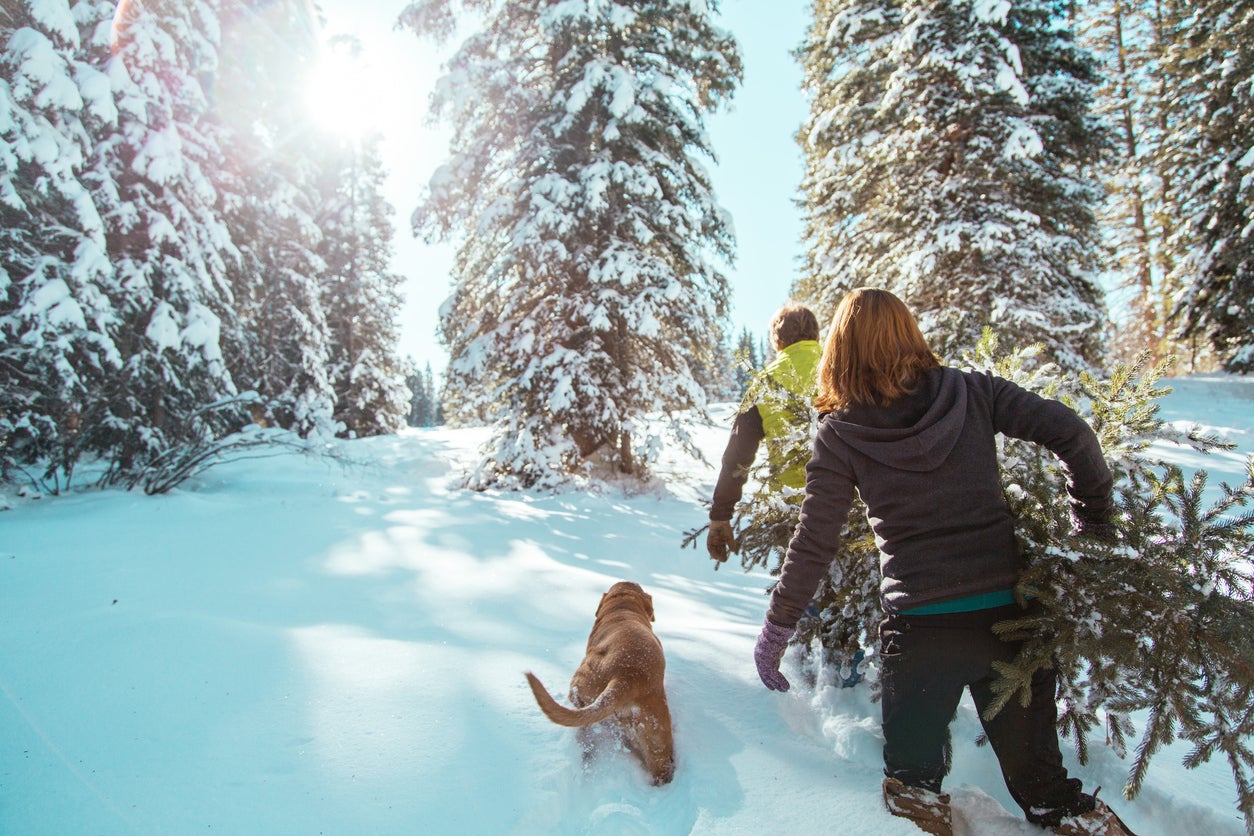Why I won’t be killing a tree for Christmas this year
The planet is desperate for more trees, so I’m going to spare one from the wood-chipper this festive season


I’m usually first in the queue at the start of December when the Christmas trees go on sale, quivering with happy anticipation. I’ve prodded pine needles and fluffed up branches in car parks, out the back of garden centres and outside pubs, slavering with excitement.
One year, faced with the fact that the tree couldn’t be delivered until the end of the day, I dragged a six-and-a-half-foot Norway Spruce home on the bus. It was only two miles down the road from West Norwood to Tulse Hill but that’s a two-mile journey none of my fellow passengers will never forget. Nor will I.
I love the smell of a real Christmas tree in the house, the scent of pine needles, the fragrance of the forest. Bringing something alive indoors in the depths of winter, actually bringing life into the house when everything outside is dying. Get me, I’m down with the Pagans. Because long before Christians hijacked Christmas, it was a winter solstice festival when everyone, from the Romans and the Druids to the ancient Egyptians, brought evergreens inside.
Evergreens symbolised life and fertility in the dark days of winter, evergreens were a harbinger of spring, with its new life and light. Light and life and living things I thought happily, shaking baubles from cardboard boxes and unwinding strands of tinsel.
Except once I’ve cut off part of my Christmas tree’s trunk, trimmed a few lopsided branches, shoved it into a tree stand, rammed it up against a radiator and festooned it with hanging reindeer, it’s not living any more. It’s dying. It’s been dying ever since it was cut down from the forest.
This year I’ve realised I’ve cried enough tears lifting battered and bruised trees out to their lonely graves every January, pine needles dripping, bare branches sagging. I’ve chopped them, burnt them and recycled them but this year I won’t be doing it again.
The British Christmas Tree Growers Association (BCTGA) estimates that around eight to 10 million trees are bought each year in the UK, while an estimated 32.8 million are sold in the US. That’s a lot of trees – and an awful lot of tears come 6 January, the traditional day of the Christmas tree massacre.
In fact, 2020 is set to be a bumper year for tree sales. Early orders for UK trees from garden centres and farm shops are significantly up from last year say the BCTGA. If the number of twinkling lights and flashing stars I’ve seen in windows in my area since the middle of November – yes, that’s right – is anything to go by, the world and its mother are putting up Christmas trees this year. And nobody is waiting until Christmas Eve.
Our planet is desperately crying out for more trees. It’s one of the cheapest and easiest ways of tackling climate change, by taking harmful CO2 gases out of the atmosphere, but we need more native woodlands. Commercial plantations, such as Christmas tree farms, won’t give us the biodiversity we need. “A mixture of woodland types provides a balanced approach to curbing climate change over both the shorter and longer term,” say Forestry England. Today, only 2.4 per cent of the UK is ancient woodland and we urgently need a native replanting scheme.
The good news is that plans are afoot, and the prime minister has committed to increase tree planting across the UK to 30,000 hectares per year by 2025 as part of his 10 Point Plan for the environment. And perhaps our habits are changing too. Maybe there are more people like me, crying into their empty Christmas tree stands come the first week of January. Sales of potted trees are apparently on the rise – though most of us still prefer a cut one say the BCTGA.
This year, I’ll be decorating the evergreen in my front garden and trimming it to bring some branches indoors. I’ll go foraging for holly and ivy, maybe track down some mistletoe. I’ll still fill the house with greenery but without the cost of killing a tree.
This has been a year like no other. We've struggled with grief, frustration, boredom and sour-dough burnout, lost freedoms we all took for granted, lost people we loved. So, I’ll not cry this year over a Christmas tree. This Christmas there will be no more tears.




Join our commenting forum
Join thought-provoking conversations, follow other Independent readers and see their replies
Comments